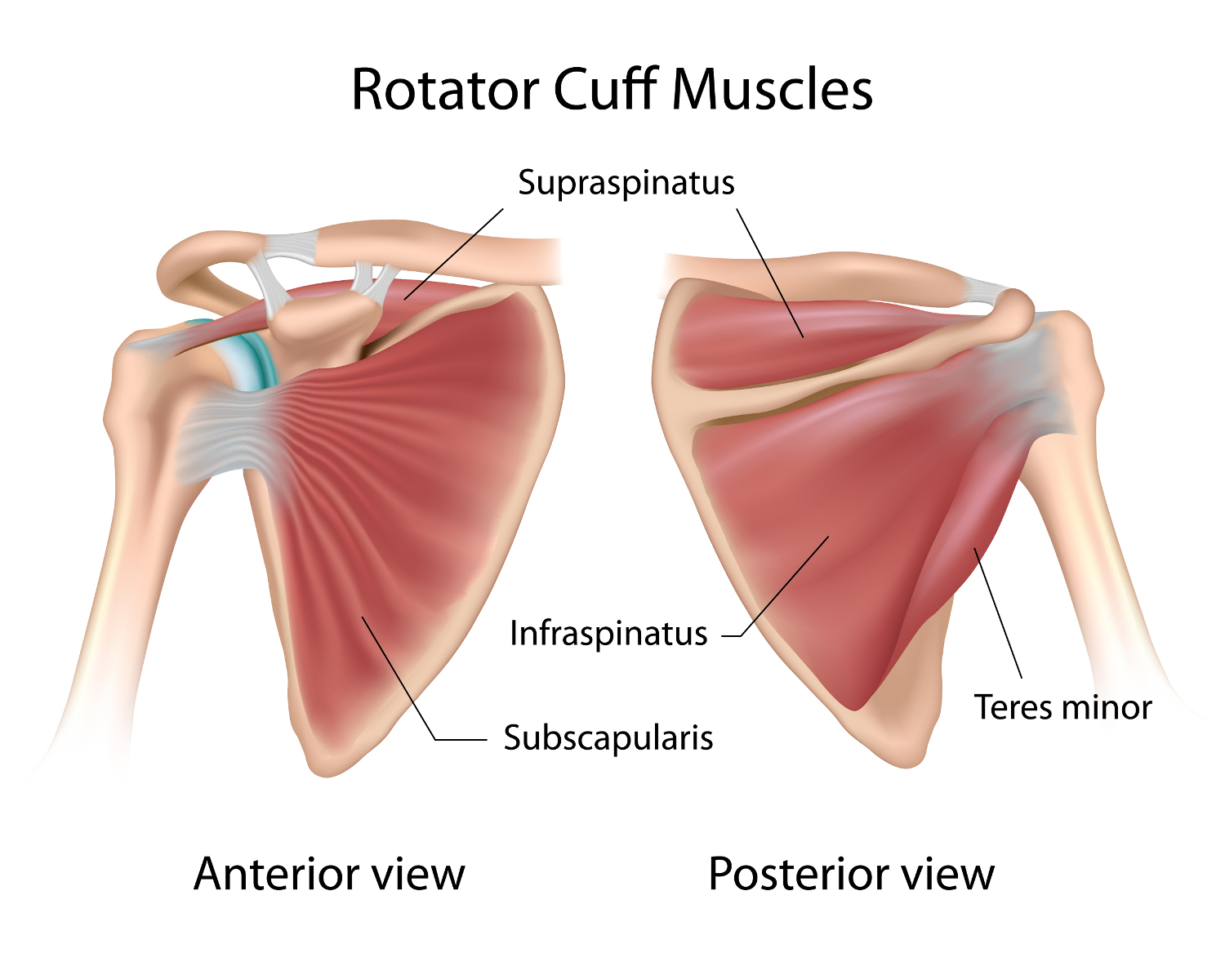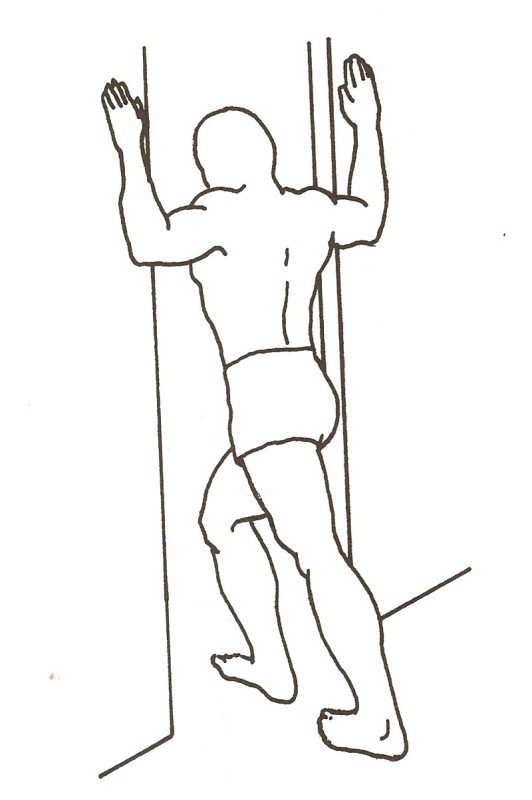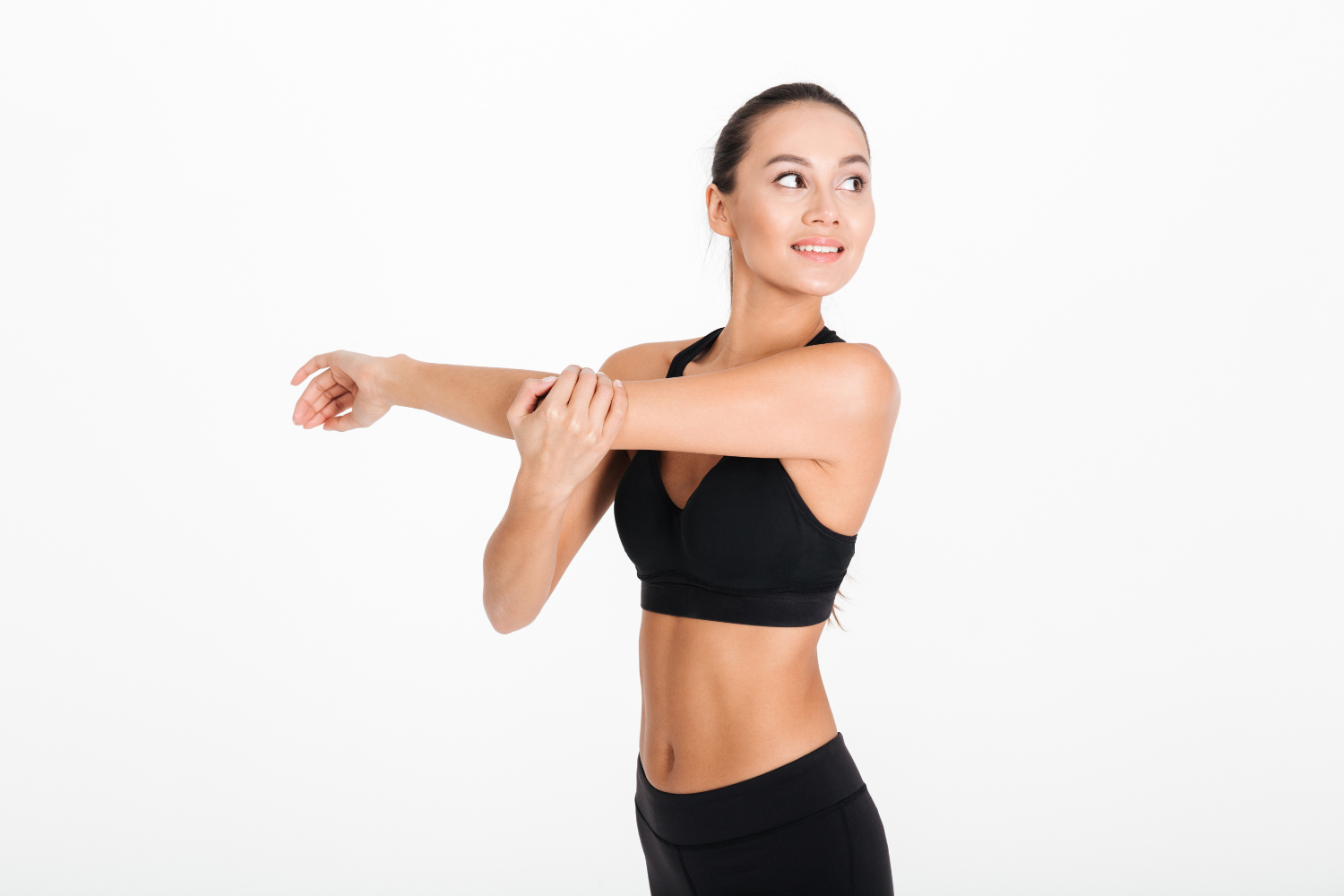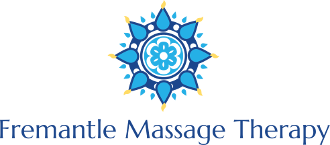
Rotator Cuff Injuries
What is the Rotator Cuff?
The rotator cuff is a group of four muscles which help to stabilise the shoulder joint. The shoulder is a ball and socket joint and has a large range of motion which is necessary for us to go about our daily tasks however it also means the shoulder joint is prone to injuries. The more mobile a joint is, the more likely a person will exceed the natural limits of the joint and create a problem. This could come about very quickly such as being tackled in a ball sport or more gradually by doing repeated physical labour with the arms for long hours, day after day.
What Muscles Make up the Rotator Cuff?
The four muscles that make up the rotator cuff are:
- Supraspinatus
- Infraspinatus
- Teres Minor
- Subscapularis
Let's look at each one individually.
The Supraspinatus is a small muscle that runs along the top of the shoulder blade (scapula). Apart from stabilizing the shoulder joint, it also assists with abducting (lifting away from the body) the arm. The Infraspinatus is also a small muscle and is located on the back (posterior) of the shoulder blade. It performs the action of lateral rotation of the arm such as when you put your hand behind your head. Moving along to Teres Minor, this muscle also shares the job of laterally rotating the arm. And lastly, the Subscapularis allows us to medially rotate our arm such as when we put our arm behind our back. These are commonly abbreviated as the SITS muscles.
Where is the Rotator Cuff Located?
The rotator cuff is located around the ball and socket joint of your shoulder. This joint is called the Glenohumeral Joint. The “Gleno” part refers to a cavity of the scapula (shoulder blade) and the “Humeral” part refers to the bone of the upper arm.
Are the Rotator Cuff Muscles Visible?
It's unlikely that you will be able to easily see and identify all the rotator cuff muscles. For example, the subscapularis is hidden under your shoulder blade. When looking at a lean and muscular specimen you will be able to identify most of the muscles by getting the person to perform certain actions such as medial and lateral rotation of the arm.
What are the Symptoms of a Rotator Cuff Injury?
Many people experience a dull ache that feels deep in or around the shoulder joint. There may also be pain when pressure is applied to the shoulder such as for those people that like to sleep on their side. Another common symptom is difficulty in reaching behind your head or back.
How are Rotator Cuff Injuries Diagnosed?
A doctor or physiotherapist can diagnose your rotator cuff injury. They will likely test the stretch and range of motion of your shoulder muscles. If they are unable to get a positive response from simple physical testing, you may need to have some scans done such as an ultrasound, x-ray or MRI. This will give them a much better idea of exactly what is going on in your shoulder joint and will inform the treatment plan that they develop.
What Causes Rotator Cuff Injuries?
Rotator cuff injuries may be either acute (from a specific, once off event) or chronic and degenerative taking place over a long period of time. Intense and repetitive physical activities such as sport or manual labour can degenerate one or more rotator cuff muscles over time leading to an injury. Also, as you age your genetics may come into play to work against you. Just because a relative had problems with their rotator cuff doesn't mean you will but it may be more likely. If that is the case, make sure to arm yourself with the knowledge needed to prevent any injuries before they may occur.
What are the Most Common Rotator Cuff Injuries?
Common injuries for the rotator cuff are:
Strains
A strain is a tear in the muscle or tendon. These vary from grade 1 (mild tearing of some fibres) through to grade 3 which is a complete rupture of the muscle.
Sprains
Like a strain but involving the ligament tissue rather than the muscle or tendon. Since ligaments have a slower blood supply than muscles, ligament injuries can take much longer to heal.
Tendonitis
Tendonitis is the Inflammation of a tendon. Usually one of the biceps or rotator cuff tendons
Impingement
There are many structures packed into your shoulder joint. If they are irritated and begin to swell there is not much space for them to expand and this can cause problems.
Shoulder Bursitis
The bursa is a fluid filled sack that helps to cushion the ball and socket joint. Just like most tissues, the bursa can become enflamed which can cause pain, weakness and reduced range of motion. Shoulder Bursitis can take several weeks to heal or in some cases can become chronic and continue to flare up over time.
Will the Rotator Cuff Heal on Its Own?
It's possible for a rotator cuff injury to heal on its own however the healing process may be slowed down if you are having to perform movements which irritate the site of injury. It's best to consult a healthcare professional in order to diagnose the issue and gain an understanding of treatment option and rehabilitation best practices.
Will a Rotator Cuff Injury Require Surgery?
In many cases a rehabilitation program will be enough to heal an injury without needing surgery and it is usually considered as a last resort. If nothing else is working, your doctor or physio may recommend it however there are always risks associated with surgery such as infection and pain. In addition, you may still not get back the full strength and range of motion you were hoping for. These are matters to discuss with a qualified medical professional once other options have been exhausted.
How Can I Prevent a Rotator Cuff Injury?
Apart from the obvious health advice such as eating well, exercising adequately and making sure to get a good night's sleep regularly there are some other more specific things that you can do to prevent injuries. The most common approach would be to progressively strengthen the rotator cuff muscles. A cheap and easy way to do this is to use resistance bands.
How Do I Strengthen the Rotator Cuff with Resistance Bands?
The main actions that the rotator cuff muscles perform are medial rotation (imagine putting your arm behind your back), lateral rotation (imagine putting your arm up behind your head), and abduction (imaging keeping your arm straight and lifting it in an arc towards the ceiling). All these actions can be formed with resistance bands by simply securing the band to either your foot or an object nearby. Start with the band of least resistance and perform three sets of ten repetitions per day for each movement. Slowly over time you will build up strength and you can move on to the more difficult bands.
How Do I Stretch the Rotator Cuff?
One or more of the muscles of your rotator cuff may become to tight over time and it may be necessary to perform a regular stretching regime in order to release the soft tissue. The two main stretches we recommend are the “doorway stretch” and the “crossover arm stretch”.
Doorway Stretch
To perform the “doorway stretch”:
- Find a solid and stable doorway
- Hold your arm horizontal to your body with your elbow bent at 90 degrees
- Place your arm against the door frame
- Slowly and carefully lunge forward with your body to stretch the arm back behind yourself
- Find a comfortable but challenging level of resistance
- Hold it for about 15 seconds
- Swap sides and repeat a few times a day if possible.

Crossover Arm Stretch
To perform the “crossover arm stretch”:
- Straighten the arm you on the side you want to stretch
- Use your other hand or forearm to pull the straight arm across toward your torso
- Find a comfortable but challenging level of resistance
- Hold it for about 15 seconds
- Swap sides and repeat a few times a day if possible.

Does Remedial Massage Help with Rotator Cuff Injuries?
Soft-tissue therapies such as Remedial Massage are recommended to assist the rehabilitation process for many rotator cuff injuries. Remedial Massage can reduce the recovery time by increasing the circulation of blood to the affected area and by allowing lymph to return to the heart for recirculation. Remedial massage may also help by reducing the severity of any scar tissue that has been left behind at the site of injury. Regular massage after surgery can also help to reduce scar tissue but just make sure the incision is fully healed first and has become a scar.
Can Trigger Point Treatment Help with Rotator Cuff Injuries?
A Remedial Massage Therapist may also be able to provide some relief by deactivating trigger points in the Infraspinatus muscle. There is a specific place on the back of the shoulder blade that radiates pain into the shoulder joint and down the front or side of the arm. Many people find that work on this trigger point can substantially reduce their shoulder pain issues. It is certainly worth a shot as it doesn't take long to locate and release this trigger point.


